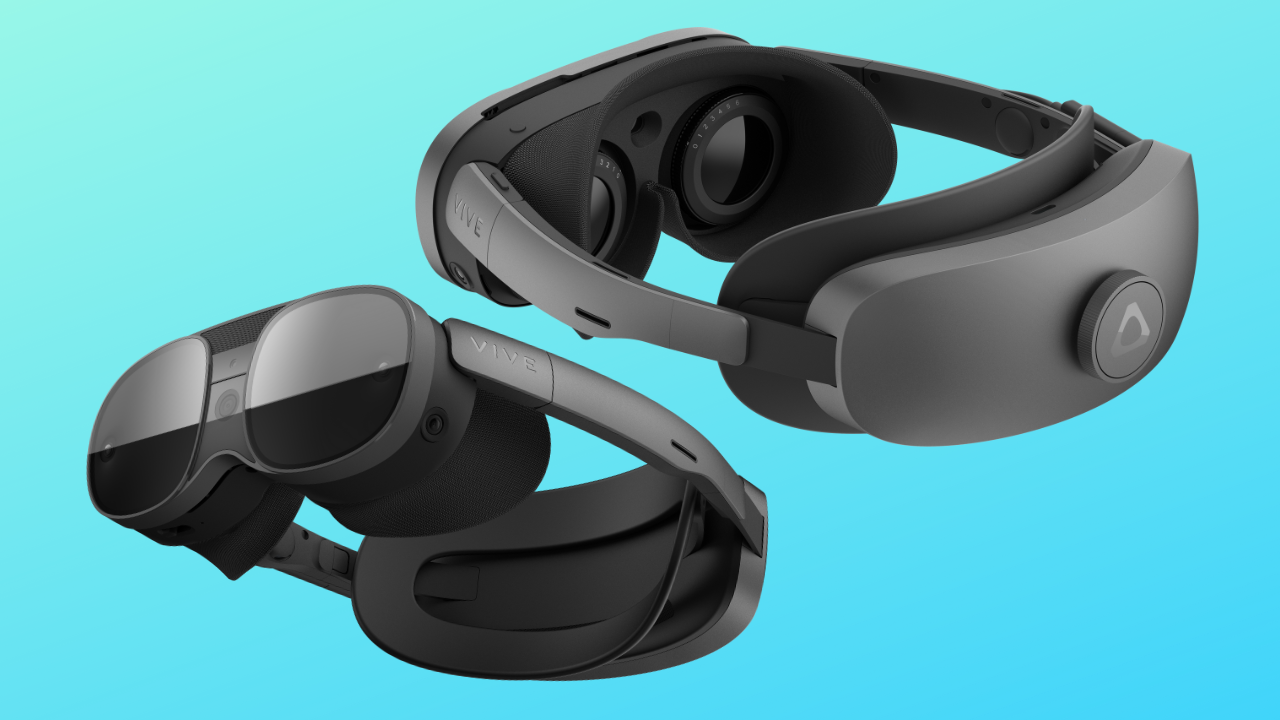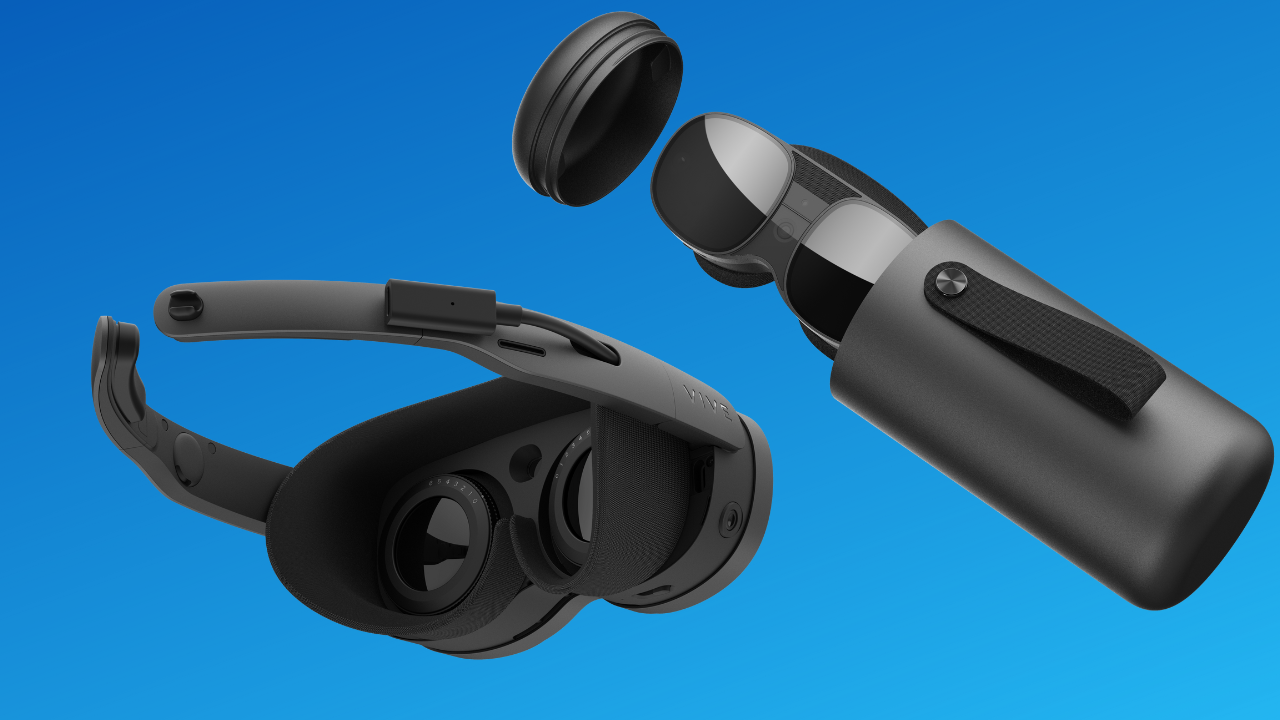Late last year, Meta announced and released the Meta Quest Pro, its most powerful headset yet, shipping with face and eye tracking. Now, HTC’s upped the game with its new headset announcement: the HTC XR Elite.
And, for the first time in a while, it seems like HTC is ready to once again be ahead in the VR market and claw back some of Meta’s market share. While Meta’s still dominating with its affordable all-rounder, the Meta Quest 2, the HTC XR Elite seems to be a more realised headset, functioning as a headset for enthusiasts more so than the Quest Pro, which functionally serves as an upgraded Quest 2.

The price is even better. While the Meta Quest Pro will cost you $2,449 in Australia, the HTC XR Elite will only set you back $2,099. That is, mind you, also below the price of the HTC Vive Pro 2 full kit.
HTC Vive’s country manager for ANZ, Thomas Dexmier, sat down with Gizmodo Australia to run us through the features. I’ll be honest: there were times during his presentation when I was left with my jaw dropped, being a VR enthusiast myself. So, let’s go through the big features.
HTC’s first XR product
No doubt you saw it in the name of the device, but this is HTC’s first product with XR capability.
What that means in basic terms is that, if you wear this headset, you can functionally use it to project virtual monitors in front of you to enhance your workflow, just as an example. The Quest Pro also has this capability, and you can see it in action in the video below.
“It’s our most versatile XR product to date,” Dexmier told Gizmodo Australia.
“We’ve always been very strong in the VR world but for the first time we’re stepping outside of traditional VR and as the name would suggest, it’s an XR product.”
So while the VR aspect is still a pretty strong part of the experience, XR is now part of the sales pitch.
This has, in a way, sold me on the idea of an XR device as a lifestyle-enhancing tool and at some point I’d love to use the HTC XR Elite as a work tool. Dexmier also told us that he’s been using XR tech during his daily work.
“The productivity is what I’m using the most at the moment with the ability to integrate with your real keyboard and mouse and pull up three big screens in front of you while your using your real equipment, seeing the backdrop of your office, but having these virtual screens,” Dexmier said.
“All that with a headset that is super light to wear than you can stay in for an extended period of time.”
And of course, it needs specs to match the idea. Which, yes, it has, and they’re very impressive.
Seriously small
The focus of this device is “go small or go home”, which has similarly been adopted by the Quest Pro, a device that shaved a lot of the bulk off its previous model.
Go small or go home. pic.twitter.com/PUqqKn4V5E
— HTC VIVE (@htcvive) October 6, 2022
Perhaps the most eye-catching thing about the announcement is how much the HTC XR Elite has slimmed down when compared to other HTC headsets. It’s based mostly on the HTC Focus 3 model, which was only ever sold to business customers, but with some of the design philosophy that went into the HTC Flow.
It’s frankly impressive. Weighing only 625 grams (the Quest Pro weighs 722 grams and the Quest 2 weighs 503 grams), removing the battery brings it down to a comfortable 240 grams (more on that later).
It’s so small that Dexmier says that you could quite easily put four into a backpack and go travelling, whereas most other headsets would require specific travelling equipment.
And this all comes back to the form factor: it’s tiny. Straps only come down the sides, not the top, with a bug-eye aesthetic instead of a brick-like eye cover (like on the Quest 2 or Vive Pro 2).
This is so that the headset is more appealing to more people, who don’t like the bulkiness of VR headsets and maybe don’t want their hair getting all messed up.
Which I’m all for. Let’s jump into the specs.
Compact power
“We are not compromising on any performance … We’re not skimping on anything,” Dexmier said.
Running through the specs quickly, the HTC XR Elite announcement showed off a 90hz refresh rate, two 4K screens (one for each eye), above-ear speakers, a removable battery (you have no idea how excited I was to hear this) and a Qualcomm Snapdragon XR2 chip (the Quest Pro uses the XR2+ chip, just for context).
There’s a lot to go over from what’s listed above, but I’ll try to run through it succinctly.
Firstly, a 90Hz refresh rate is pretty standard for HTC, and is on par with the Quest Pro. Not many headsets go above 90Hz, except for some like the Vive Pro 2 and the Pimax 8KX.
Equally so, 4K is a welcome sight at the $2,099 price point. The Quest 2 and Quest Pro max out at 1080p, while the HTC Vive Pro 2 went up to 5K. As I said, very welcome stuff, although I’ve never had a problem with 1080p VR (and to get the most out of it, you’d need a powerful PC).
Of all the specs though, I was most excited about the battery, which is removable. The device can also be powered by an external USB-C battery pack.

“We’ll sell battery packs as accessories because the beauty is that in this one, we have the ability to hotswap,” Dexmier said.
“We’re expecting a baseline of two hours but we want to be fairly conservative when we say claims around battery life.”
There’s also the XR2 chipset inside, which puts it on par with the Quest Pro.
What’s not equal to the Quest Pro is face and eye tracking. While the Quest Pro includes face and eye tracking, the HTX XR Elite doesn’t, and it’s on purpose.
“Throughout 2023, we will have a facial and eye tracking module. It’ll be an all-in-one module this time, it won’t be like two different modules,” Dexmier said.
“We like to keep it optional because the market is not mature enough for us to justify having this always on consuming battery, potentially tracking data consumers start to be very very careful with. So our approach is: if you don’t need it, don’t buy it. Don’t use it. But we’ll make it available as an optional accessory down the line.”
So it has specs that align it well against the Quest Pro, but HTC is targeting enthusiasts with this device, not the general public like Meta is with its new device.
Who is the HTC XR Elite for?
“We’re playing in two very different leagues right now,” Dexmier said, when I asked him about competition with Meta.
“There will be a whole bunch of people that aspire for more and better than what they have in the quest… … It’s fair to say that this product delivers much more than any other product in the market”
Much of Meta’s approach to VR has relied upon a locked-down ecosystem. Although the headset can be run through a PC, everything loads primarily through Meta’s OS and software, with it heavily encouraged to buy stuff from the Oculus store.
HTC seems to be approaching this differently. PCVR, onboard applications, mobile VR and XR use seem to have been weighed equally, with the headset intended for VR users after a greater experience.
The company isn’t making any argument about it being an entry-level device. It’s for enthusiasts who have specific needs.
And without revealing too much to me, Dexmier told us to “stay tuned” on a cheaper device that could rival the Quest 2. So, as you can expect, I’m very excited for that.
Preorders for the HTC XR Elite are live as of the announcement, with deliveries beginning at the end of February.
